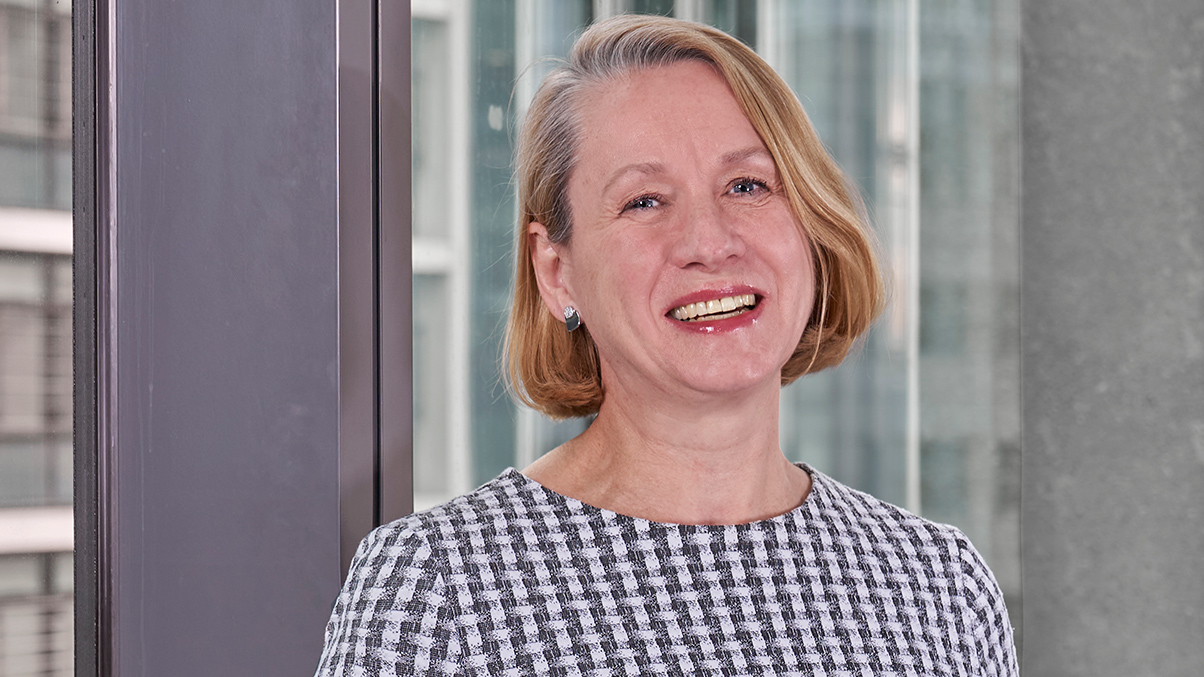Code of Practice 9 enquiries are serious. COP 9 is the common acronym for enquiries carried out by HMRC under the civil disclosure of fraud (CDF) process and via HMRC’s Fraud Investigation Services (FIS) team. Despite its critics, the COP 9 process appears to be here to stay. Sarah Stenton and Lisa Vanderheide provide practical insights for advisers.
The Code of Practice 9 (COP 9) process is a useful means, if used correctly, for a taxpayer to disclose tax fraud to HMRC. The process offers valuable assurances to both HMRC and taxpayers alike in the pursuit of settling cases of tax fraud. However all too often the process is badly handled and, in some cases, abused. Some key practical tips include: properly briefing clients for the opening meeting with HMRC to avoid any surprises; using scoping meetings to build a respectful (yet robust) working relationship with HMRC; keeping HMRC properly informed on progress; and ensuring the COP 9 report submitted is consistent with the scope originally agreed. Despite its critics, COP 9 appears to be here to stay and it remains a valuable process for those suspected of tax fraud or those who have a voluntary disclosure to make.
HMRC opens a COP 9 enquiry where it suspects fraud and is prepared to settle the tax liability civilly rather than criminally. One valuable ‘advantage’ to a person under enquiry via COP 9 is that it gives them the comfort that they will not be prosecuted for the tax fraud, as long as the COP 9 process is adhered to and full disclosure is made.
When a person receives a letter offering them the opportunity to disclose tax fraud via the COP 9 process, it is the start of what can be a lengthy process. We have worked on a number of COP 9/CDF enquiries and discuss in this article nine key steps to the successful resolution of a COP 9 enquiry.
Committing to tax fraud?
The COP 9 process requires an upfront admission of a tax fraud by the person under enquiry. Indeed, the reason HMRC updated the COP 9 process in 2012 was to ensure that tax fraud is admitted from the outset. Prior to 2012, individuals were entering into the COP 9 process with no admission of tax fraud but were still expecting (and obtaining) immunity from prosecution.
The COP 9 process requires an initial ‘outline disclosure’, which is designed to ensure that all tax irregularities, relating to both the individual and any business he/she is associated with, are outlined at the outset. The outline disclosure must be submitted to HMRC within 60 days of the date of HMRC’s letter advising of the COP 9 enquiry.
The outline disclosure form differentiates between tax irregularities arising from deliberate (i.e. fraudulent) behaviour, and irregularities arising from non-deliberate behaviour. Admitting to fraud can be a difficult step for many individuals to take as there can be no ambiguity over what has happened; either there has been fraudulent/deliberate conduct or there has not, and that distinction needs to be made at the outset.
A failure to admit fraud at this stage is deemed a ‘denial’. HMRC may then choose to carry out its own investigation or may pass the matter back to the criminal prosecution team. That is not to say, however, that individuals should effectively ‘roll over’ and admit to fraud when there is none. Consideration should be given as to why HMRC thinks there is fraud, and it should be addressed in the outline disclosure accordingly.
There may be the temptation by some individuals (or their advisers) to admit to tax fraud in the outline disclosure to secure immunity from prosecution, and then seek to ‘water it down’ in the final report as carelessness’. HMRC frowns on such tactic and may reject the report and withdraw the COP 9 process accordingly.
Opening meeting
Once the outline disclosure is submitted to HMRC (and, hopefully, it is content that all its initial concerns have been addressed), HMRC will usually send a letter confirming the COP 9 process and suggesting an initial meeting. The meeting is ostensibly to discuss the content of the outline disclosure and to gather some further background information. Although the formal Hansard questions have now been dispensed with, we have seen HMRC still seek to ask these questions in some cases.
These meetings can be lengthy and stressful for an individual, and although the individual is usually expected to attend, it is not mandatory. There can be various reasons for individuals not to attend, including being elderly or in poor health, or where there are sensitive issues that they do not want to put in front of HMRC.
If the client is attending, it is important that they are fully briefed about HMRC’s likely approach and the detailed nature of its questions, as any surprises can be tricky to manage for both the client and adviser. For example, a client once insisted throughout an HMRC meeting that they had low outgoings and led a frugal lifestyle. When HMRC later asked detailed questions about their assets, their credibility was undermined when they had to disclose that they own three expensive performance cars.
Outright lies pose huge risks, so the client must be truthful. We recommend that if a client is unsure about what to say in response to a question, it is best to say nothing and offer to revert to HMRC with a written response. HMRC understands that these meetings are stressful and are usually supportive of an individual abstaining in response to certain questions, provided this is handled in the right way. Similarly, advisers should not be shy about intervening during questions or calling a ‘time out’ to discuss a question with a client. Overall, it is better to say nothing than something that may cause regret. For example, a client once panicked during HMRC questions and when answering a direct question from HMRC replied with ‘no’ when it should have been ‘yes! As soon as it became apparent that he had not been truthful, we ensured that the matter was rectified with HMRC.
Scoping meeting
Previously, opening meetings and scoping meetings were conducted separately, but they now tend to be conducted at the same time.
Few COP 9 enquiries are settled without the completion of a detailed report setting out the full nature of all tax irregularities. The scoping meeting, as the name suggests, is intended to discuss and agree with HMRC the full breadth and detail of the report. If not already apparent from the questions asked earlier in the meeting, the topics HMRC asks to be included in the report are likely to highlight the nature of HMRC’s concerns in offering the CDF process (albeit HMRC cannot formally disclose its concerns at this stage).
The scoping discussion should include significant negotiation as it is for the adviser to agree with HMRC what is reasonable in terms of the work to be carried out for the report. For example, it is common with a COP 9 report for HMRC to ask for detailed bank account reconciliation work covering the full period of the tax irregularities. We would normally argue that subject to any surprises resulting from the reconciliation a few sample years should suffice.
The scoping discussion is also important where the client has a myriad of business interests. Where the tax risk in some businesses is likely to be low (a large audited corporate entity, for example) it should be possible to eliminate a detailed review of the businesses from the report preparation. It will, however, depend on the facts. If HMRC’s concerns derive from the operation of such a business, it may be that the enquiry covers both the individual and the corporate entity, and we have worked on such COP 9 cases in the past.
Above all, the scoping meeting is a good opportunity to build a respectful (yet robust) working relationship with the HMRC inspectors. Discussion should turn to agreeing timescales, ongoing liaison and updates. A COP 9 enquiry is undoubtedly unpleasant and stressful for the client, but nothing will be gained from making HMRC the enemy’.
It’s more than just a report writing exercise
Everyone breathes a sigh of relief when the opening HMRC meeting is over, but now the real work begins.
The next few months are not only about undertaking the necessary reviews, quantifying the tax irregularities and preparing the written report; it is also about managing the relationship with HMRC. We normally schedule monthly telephone updates to provide HMRC with a summary of the work done to date, any potential delays and the potential movement of deadlines. Few COP 9 reports are straightforward, as collating information from the client and third parties can be a time-consuming exercise, as can reconciling issues identified during the COP 9 analysis work. HMRC is usually sympathetic to such difficulties as long as it is kept informed.
Even with the best will in the world, matters can come to light during the preparation of the COP 9 report that have not been disclosed in the outline disclosure (for example, where there is doubt as to the correct technical treatment of a tax transaction that has not been identified by previous advisers). If such an issue arises, HMRC should be made aware immediately.
There are a number of risks if the HMRC relationship is not managed properly or HMRC is not kept informed of progress. For example, HMRC may assume that the client is not cooperating with the COP 9 process, and it may be withdrawn. If this happens, HMRC is obliged to conduct its own investigations and immunity from prosecution is lost, as is control over the process. In conducting its own investigation, HMRC is likely to issue intrusive information requests not only to the client, but potentially also to third parties including banks, employers and, in some cases, professional advisers.
Do what you say you will do
It is important that a report is submitted to HMRC that is in line with its expectations, i.e. the report is consistent with both the scope agreed in the scoping meeting and in the regular updates that follow. The report should include details of the work carried out, the sample years agreed and necessary explanations, and set out all conclusions reached. If additional tax is due, calculations should be provided.
We have seen an occasion where advisers agreed to the scope of a COP 9 report simply to get the COP 9 process over the line’. However, they then submitted a COP 9 report that bore no resemblance to the scope agreed, included spurious claims, and even stated that there was no fraud. Naturally, HMRC, having trusted the client and adviser to prepare the report as scoped (and waited 12 months for it) were highly disgruntled and responded as such. The adviser did not respond to any of HMRC’s letters on behalf of the client, meaning HMRC was eventually forced to determine the tax liability. This was an extremely costly mistake for the client, as the tax determined by HMRC far exceeded the true tax position and the client had limited recourse to challenge HMRC. We were instructed on behalf of the client and, fortunately, were able to recover the relationship with HMRC and find a mutually agreeable resolution.
The ‘full monty’
As mentioned above, the quid pro quo for HMRC providing immunity from prosecution is that the client makes full disclosure. The content of a COP 9 report will depend on the nature of die tax irregularity and the scoping agreed with HMRC. However, ensuring that full disclosure is made requires certain core reviews’ that should always be undertaken. A means review is a way of determining the amount of money that is available to a client for living expenses and it is often an easy way to identify whether there are any glaring deficiencies in what income the client is purporting to have at their disposal and their lifestyle.
Bank and credit card analyses are a good source of information about what funds have passed through a client’s hands, where it came from and where it has gone. Such analyses are key in not only identifying earned income but also identifying any untaxed investment income or capital gains. Any analyses should be carried out on an investigative basis, so ask questions where something does not look right and where there may potentially be an additional tax liability.
Counting the cost
At the heart of a COP 9 enquiry is the financial cost, including tax, interest and penalties.
When arriving at the correct amount of tax, HMRC’s view may not always be correct. For example, the period over which HMRC believes it can collect tax may be wrong. Where tax has been understated due to fraud, HMRC can assess 20 years. However, a tax irregularity that arose because of a simple ‘mistake’ can only be assessed for four years, and a tax irregularity as result of a ‘failure to take reasonable care can be assessed for six years. Determining and carefully presenting the facts around the tax irregularity can have a significant impact on the tax, interest and penalties due.
Interest is a statutory charge designed to compensate HMRC for the delay in receiving the money. The circumstances in which HMRC will allow for any interest mitigation are, unfortunately, limited, but there are circumstances where mitigation can be argued for particularly where there has been significant HMRC delay. In addition, mistakes are often made by HMRC when calculating interest, particularly where there is both late paid and repayment interest involved. The key is to check the interest calculation carefully. In particular, ensure that all relevant credits are given and that the correct dates are used for calculating when the underlying tax should have been paid.
Penalties are always considered by HMRC where there is found to be additional tax due. Penalties range from 0% to 200% of the tax (where there are offshore elements) and, in some circumstances (where there is an asset-based penalty charge for an overseas issue), it can be considerably more. It is, therefore, imperative that potential penalty charges are considered early in the COP 9 process. It is key for advisers to ensure that not only is the client made aware of the possibility of penalties, but that consideration is given to how penalties can be minimised. This can be achieved by taking a strategic view of how tax irregularities are presented to HMRC (with full disclosure, of course) and the level of cooperation afforded to HMRC. It is also important to remember that as well as ensuring that the tax irregularity is correctly categorised, various factors can be taken into account to mitigate ‘maximum’ penalties for the relevant offence. In our experience, HMRC will invariably start ‘high’, but there should be robust negotiation and an element of compromise on HMRC’s part to enable a reduction in the penalty sought or indeed to negotiate the penalty away completely.
Finally, remember that where clients have paid penalties for a deliberate tax irregularity, they may also be included in HMRC’s ‘deliberate tax defaulters’ programme. This enables HMRC to publish the name of the client, their address, the period of the default, the total amount of tax due, the total penalties charged, and other relevant information on their website. There are circumstances where HMRC can be persuaded not to publish these details, and this should always be explored with HMRC, where appropriate.
Formalities
There are a number of forms that need to be completed and submitted as part of the COP 9 disclosure process, notably:
- a certificate of bank and credit card accounts operated;
- a statement of personal assets and liabilities; and
- a certificate of full disclosure.
These forms are anecdotally referred to as HMRC’s ‘insurance policy’, and each form comes with the health warning mentioned earlier regarding the risk of not making full disclosure, as incorrect statements can and do instigate criminal investigations. HMRC will look for anomalies on the forms and will cross-reference the forms with information they hold, so it is important to ‘test’ the forms before they are submitted to HMRC.
The famous Lester Piggott criminal prosecution is a prime example of when the ‘formalities’ can be a taxpayer’s downfall. In 1987, Lester Piggott (the champion jockey) was famously convicted of an alleged tax fraud of over £3m after it was said that he used different names and pseudonyms to route his riding income through secret bank accounts in Switzerland, the Bahamas, Singapore and the Cayman Islands. The jockey was also said to have signed false declarations to HMRC and used a bank account that was not declared to HMRC on his certificate of bank and credit card accounts to make a final settlement of his tax liability. It was this oversight’ that led to his prosecution (though Piggott himself said this was a myth).
‘Don’t do it again!’
What if further tax irregularities are discovered some time after a COP 9 enquiry has been finalised? Obviously, this is far from idea] (remember, the COP 9 protection from prosecution relies on full disclosure). However, it does happen, sometimes accidentally and sometimes not.
If a tax issue is discovered that relates to years already covered in a closed COP 9 enquiry, the subsequent disclosure and approach to HMRC needs careful management. Anyone who finds themselves in this position should take professional advice immediately as it is key to determine whether it was a deliberate omission or a simple oversight and to manage the message to HMRC strategically. The severity of the omission will determine how HMRC pursues the matter.
There are occasions, however, where individuals who have previously been the subject of a COP 9 investigation have later been found to have made deliberate omissions from their ‘full disclosure’. In these circumstances, a criminal investigation is a significant risk, and early advice should be taken.
Conclusion
The COP 9 process has many critics, including some senior inspectors within HMRC. There are no signs, however, that HMRC has firm plans to modify significantly how it deals with cases where there is a suspicion of fraud.
The number of COP 9 cases opened by FIS dropped 10% a year between 2016/17 and 2018/19. There will be a number of factors that feed into these statistics, including the fact that many experienced inspectors have been moved into HMRC’s Counter Avoidance Directorate (CAD) and others have been seconded to help with Brexit preparations.
The statistics should not, therefore, be viewed as evidence that HMRC is backing away from COP 9 enquiries. We expect to see the number of COP 9 enquiries stabilise or increase over the next few years as HMRC gets on top of information received as a result of the common reporting standard and other exchange of information mechanisms. Some FIS offices (particularly in Scotland) also take part in task force investigations with other government bodies where potentially criminal activities overlap (ranging from tax fraud to illegal immigration). As these task forces refine their activities, more COP 9 enquiries are likely to follow.
The COP 9 process also remains an avenue for those individuals wanting to make a voluntary disclosure to HMRC, i.e. rather than waiting for HMRC to knock on the door, an adviser approaches HMRC and requests the protection of COP 9. The spectre of CRS may well be a factor in some of these voluntary approaches.
Whatever critics say or think about COP 9, it is a process that is here to stay for the foreseeable future. It is also a process with a number of potential benefits for those suspected of tax fraud or those who have a voluntary disclosure to make. It is, however, paramount that clients understand that to make the most of COP 9, they really do have to put all their cards on the table early on in the process. If the client can stomach that aspect, a COP 9 is nothing to be feared.
This article first appeared in Tax Journal, published 21 January 2020, original can be found here behind a paywall.
You can find further information regarding our expertise, experience and team on our Tax Litigation and Investigations pages.
If you require assistance from our team, please contact us or request a call back from one of our lawyers by submitting this form.
Subscribe – In order to receive our news straight to your inbox, subscribe here. Our newsletters are sent no more than once a month.






